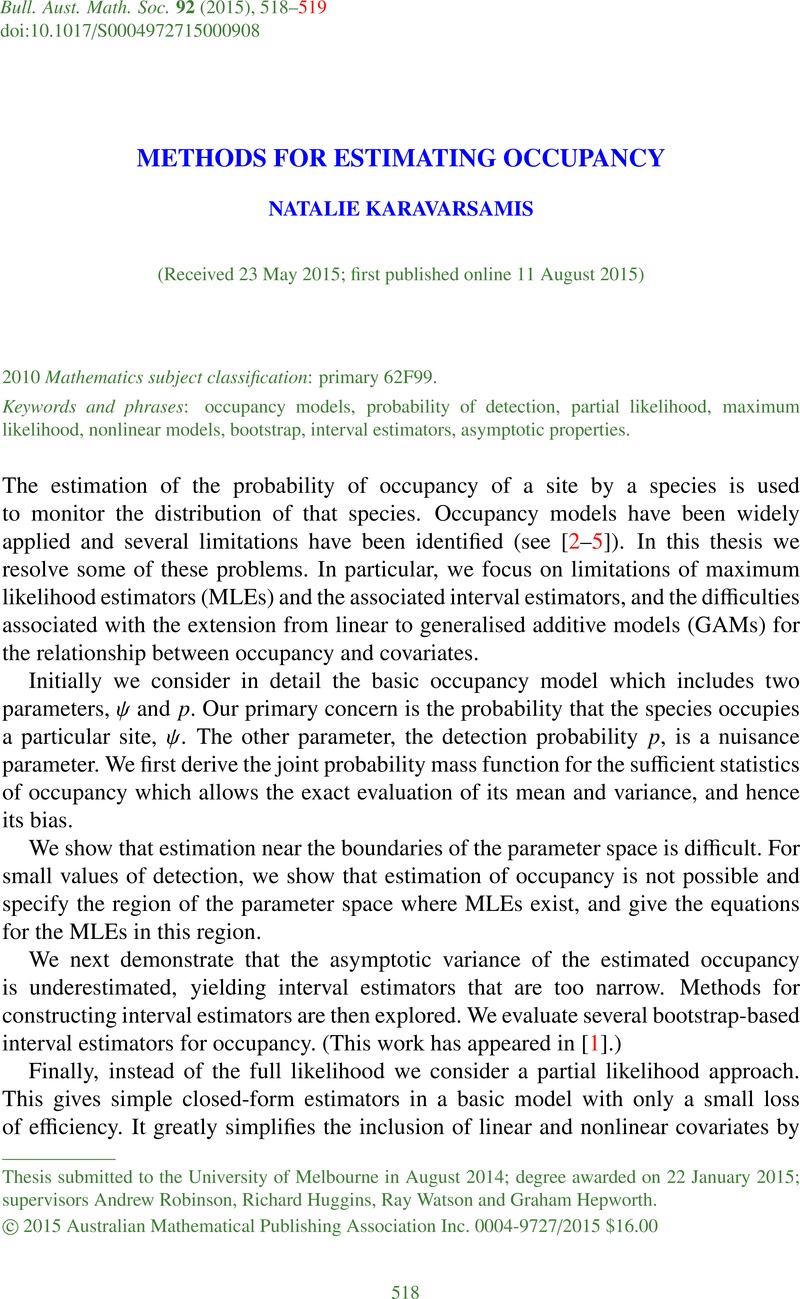Crossref Citations
This article has been cited by the following publications. This list is generated based on data provided by Crossref.
Karavarsamis, Natalie
2019.
Statistics and Data Science.
Vol. 1150,
Issue. ,
p.
68.
Stewart, Peter S.
Stephens, Philip A.
Hill, Russell A.
Whittingham, Mark J.
and
Dawson, Wayne
2023.
Model selection in occupancy models: Inference versus prediction.
Ecology,
Vol. 104,
Issue. 3,



